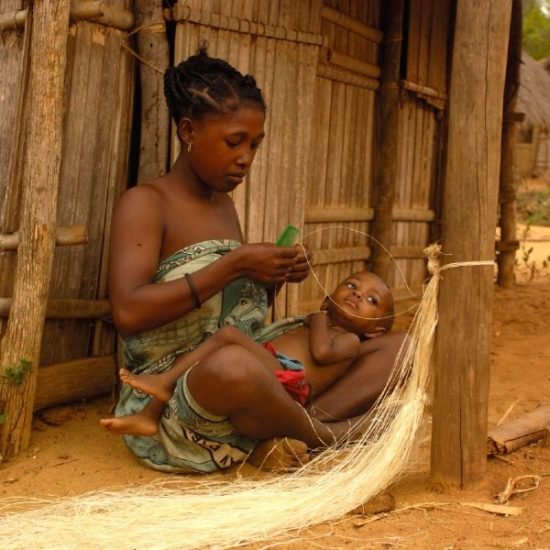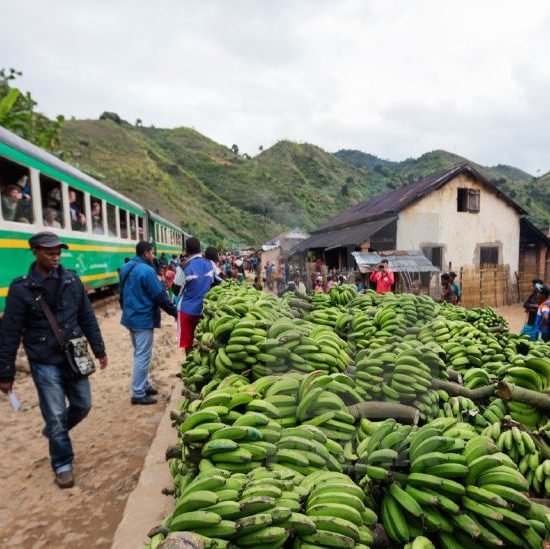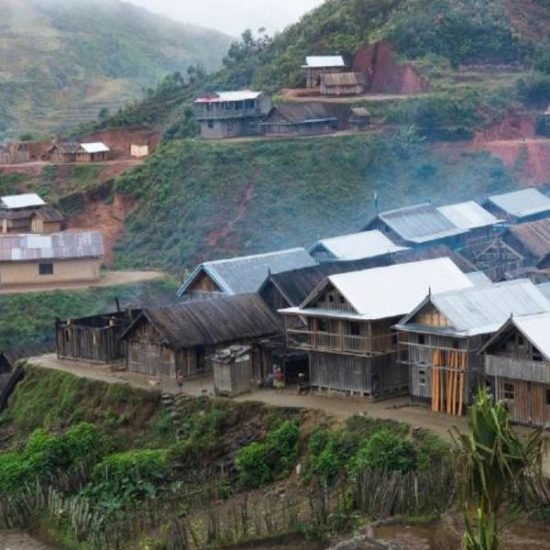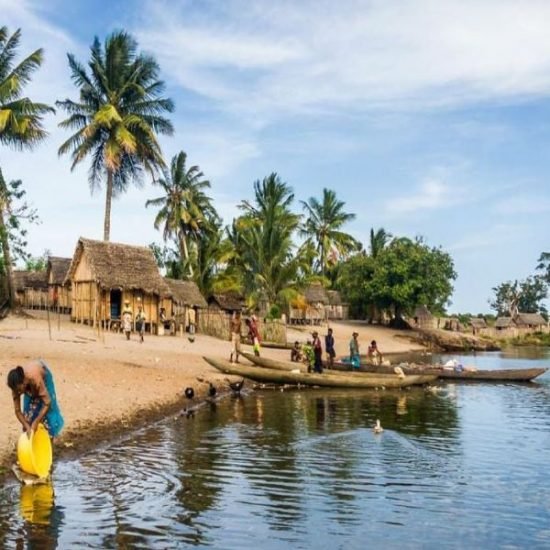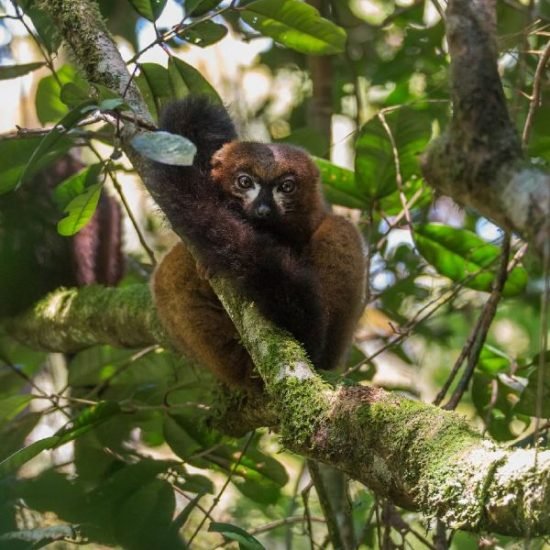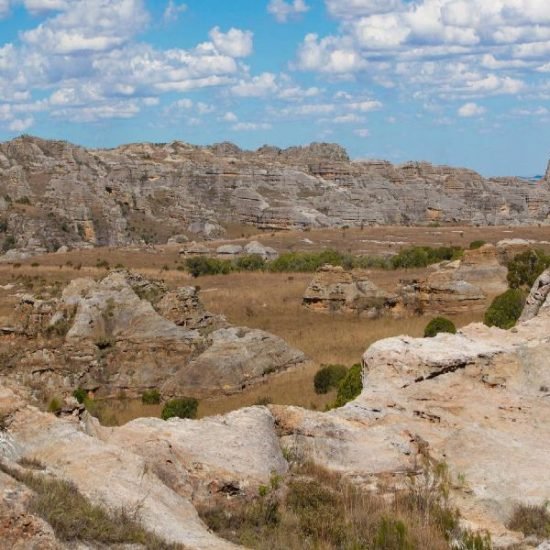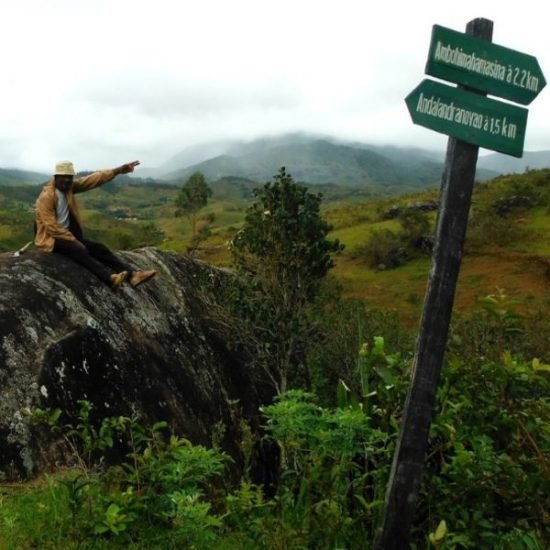People of Madagascar
€950 per person
The anthropological tour of Madagascar, we will visit and learn about the past, the present and the future of some of the most interesting people of the Highlands and the East Coast, from the food to the music and their traditions. We will reach the East Coast by train and explore the villages of the Pangalanes Canal on a dugout canoe. We will also visit the amazing National Parks of Ranomafana and Isalo. An experience not to miss.
Highlights
Antsirabe, Ambositra, Zafimaniry Villages, Sahambavy, Manakara Train, Pangalanes Canal, Ranomafana National Park, Fianarantsoa, Ambalavao, Ambohimahamasina, Anja Reserve, Tsaranoro Valley and Isalo National Park
Departure/Arrival
Antananarivo
When to Go
March - December
Included
Private Car Throughout The Tour | Driver/Guide from Antananarivo to Toliara | Entry Fee of Mentioned Excursions | Hotels on Dinner and Bed and Breakfast basis | Transfer to Toliara Airport
Not Included
Entry Visa (€35 pp) | Lunches | Drinks | Personal Expenses | Anything not Mentioned in Included
What to Bring
Comfortable athletic clothing, hiking shoes , sleeping bag, hat and warm light jacket and light trench coat.
Options
Add an expert guide for €450, from day 1 to day 15
Prices per person
- 1 Traveler €2200, 1 single
- 2 Travelers €1500, 1 tw/dbl
- 3 Travelers €1300, 1 tpl
- 4 Travelers €1150, 2 tw/dbl
- 5 Travelers €1050, 1 tw/dbl + 1 tpl
- 6 Travelers €950, 3 tw/dbl
For more options, please contact us
16 Days
1
Day 1: Antananarivo - Antsirabe 180 km, 4 hours' drive
Meet & greet at your hotel in Antananarivo driving south towards Antsirabe, our first stop. En route we will admire the typical landscape of the highlands of Madagascar, red brick houses and rice fields. Two-hours into our journey our we will be in Ambatolampy, where we will stop to visit a small foundry that specializes and making kitchen utensils. We will arrive in Antsirabe around noon, in time a a lunch break. We will tour Antsirabe on a pousse-pousse (rickshaw) visiting the local markets of Tsara Sabotsi, Antsena Kely. and discover the local traditions of crafts such as silk processing, precious stones cutting and polishing and the making objects from zebu horns. Hotel H1 or similar.
2
Day 2: Antsirabe - Ambalandingana 120 km, 3 hours' drive
In the morning after breakfast, we will head West towards the volcanic lakes of Antsirabe, Andraikiba and Titriva. The sights are really beautiful, typical Malagasy villages left behind in time, lots of waving children and the always present rice fields. By midday we will continue with our journey south, our destination today is the rustic Sous le Soleil de Mada, a lovely simple yet very homey resort located in the Zafimaniry region, few miles off the Route National 7 after Ivato Centre. Hotel Sous le Soleil de Mada.
3
Day 3 Ambalandingana - Antoetra - Faliarivo 15 km, 1 hour drive and 20 km trek
By car we will drive to Antoetra from where a local guide will show us some of the most beautiful Zafimaniry villages. The Zafimaniry people have taken refuge in this area to avoid the military service during the reign of Ranavola. Today, the Zafimaniry are famous for their woodcarving abilities and art, listed in 2003 in the UNESCO’s Intangible Cultural Heritage. It has to be said that this area was completely covered by forests of very valuable wood such as rosewood and ebony and today, no much of it has been left. There are some reforestation programs that are taking place today but, the slush and burn culture, widely spread throughout Madagascar, will surely make the tasks a lot more difficult. The best way to learn about local customs is undoubtedly on foot. We start in the morning from Antoetra across the typical Zafimaniry countryside to get to Faliarivo, a village on a rocky promontory still immersed in a medieval atmosphere; the smiles of the rural population, will remain forever in your hearts. Here, we have the opportunity to learn more about the daily life of this ethnic group. Overnight in a typical house of the village.
4
Day 4 Faliarivo - Sakaivo - Antoetra - Ambalandingan 15 km trek and 15 km, 1 hour drive
Today’s hike is through rice fields and terraces to reach another Zafimaniry village, the best preserved: Sakaivo. After the visiting the village and meeting the chief, we have a tough walk to the belvedere about 1000 steps away, it will take us 1 hour just to do the steps and another 3 hours reach Antoetra. Hotel Sous le Soleil de Mada.
5
Day 5 Ambalandingana - Sahambavy 150 km, 4 hours drive
Back on the road, our destination today is Sahambavy, 3 hours’ drive away. Sahambavy is the only Tea Plantation of Madagascar. We will visit the factory and spend some time with the locals collecting the valuable leafs. Hotel Lac Hotel.
6
Day 6 Sahambavy - Manakara
Today we will reach the East Coast of Madagascar by train. In theory, the journey by train takes 8 to 12 hours, but in practice, it may take much longer to cover the distance of 160 km. The train passes 67 bridges and 48 tunnels, we will see a part of Madagascar only reachable by this train, the verdant landscape consists of many endemic plants which make the route very pleasant. The villages along the railway, live only and exclusively thanks to the purchases made by passengers on the train so, don’t be shy to try local delicacies or to step off the train. The train on average stops at every station for at least 30 minutes. In Manakara the driver is waiting for you. Hotel H1 Manakara or similar.
7
Day 7 Manakara
We spend the day on a traditional dugout canoe discovering the Pangalanes Canal. Lush and wild on the bank of the canal with fruit trees, exotic aromas in the air where coffee, lemongrass, mango and vanilla are mixed. The Canal is the local highway for the locals, transporting goods and people in a pleasant environment. We will visit different small fishing villages on the canal and on the ocean side. Lunch included in the excursion. Hotel H1 Manakara or similar.
8
Day 8 Manakara - Ranomafana 180 km, 5 hours' drive
Back on the road, ahead 5 hours by car to reach our next stop, Ranomafana. In the afternoon, we visit the Ranomafana Arboretum, a botanical garden dedicated to the conservation of endemic trees of Madagascar. Hotel Karibotel or similar.
9
Day 9 Ranomafana - Ambalavao 120 km, 4 hous' drive
Morning visit of the National Park of Ranomafana, undoubtedly one of the most famous and spectacular natural reserves of the country. The Park lies in the middle of the jungle, in a leafy tropical rain-forest of about 40,000 hectares and at an average height of 1200 mt. above sea level. The great diversity of animal and plant species of the reserve have called for decades the attention of many biologists and naturalists from all over the world. Ranomafana has more than 12 different lemur species, as well as hundreds of varieties of wild orchids and more than 114 species of birds that are spread through the interior of this wild jungle. Our hike will be of 4 hours. From Ranomafana, we drive south to Fianarantsoa. In Fianarantsoa, we will be visiting the Old Town, aka Haute Ville, probably the best preserved Malagasy city. Ambalavao is our next stop. Hotel Aux Bougainvillées or similar.
10
Day 10 Ambalavao - Ambohimahamasina 35 km, 2 hours drive
Not far from Ambalavao, about 20 miles Southeast, we find Ambohimahamasina, home to the most sacred mountain of Madagascar: Ambondrombe. In Ambohimahamasina with a local guide, we will chose our circuit, whether is to learn more about the livelihoods of region, about the value of the sacred mountain or, about the local flora and fauna. We will stay in a local house.
11
Day 11 Ambohimahamasina - Tsaranoro 110 km, 4 hours' drive
From Ambohimahamasina we head South again, our next stop is Tsaranoro Valley. 10 Km south of Ambalavao we will visit Anja Private Reserve, a gorgeous 30-acre wonderland. Designated a protected reserve in 1999, this fascinating park has breathtaking views, beautiful plant life and hosts more than 300 not camera-shy ring tailed lemurs. Here in Anja, nature and humans coexist and flourish. After a short hike in Anja, we continue towards Tsaranoro Valley. The road to the valley is quite tough but spectacular and we should arrive at our destination early in the afternoon. Hotel Tsarasoa Guest Lodge or similar.
12
Day 12 Tsaranoro Valley
In the morning trek to reach Chameleon’s Peak. The trek is hard and the way is very steep. We will cross a small sacred forest, small streams and the views are incredible. We should back to our ecolodge early in the afternoon after visiting the local village of Morarano. Tsarasoa Guest House or similar.
13
Day 13 Tsaranoro Valley - Ranohira 210 km, 4 hours' drive
The morning will be spent to reach our next stop Ranohira, the entrance of the National Park of Isalo. In the afternoon we pay visit a to a typical Bara Village, another famous tribe of Madagascar. The baras are famous because their sport, their custom, their must is to steal a zebu in order to marry a women. In Madagascar they are known as dahalo, bandits. The baras is probably one of the most interesting tribes of Madagascar, our local bara guide will be able to let you know the most interesting facts of their beliefs and habits. Hotel Isalo Ranch or similar.
14
Day 14 Ranohira
The National Park of Madagascar Isalo, a truly unique park with incredibly diverse landscapes, including prairie-like grasslands, mountains, deep canyons and tropical oases with picturesque waterfalls dropping into inviting pools. You may consider taking a dip after a long hike, here temperatures can easily reach 30 degrees Celsius before midday. Wear good walking shoes and bring plenty of water. Before sunset we will head to the famous Window of Isalo, a rock formation for one of the best sunset photo opportunities of the tour. Hotel Isalo Ranch or similar.
15
Day 15 Ranohira - Antsirabe 500 km, 10 hours' drive
Ranohira is our point of return to be back in Antananarivo, we will reach Antsirabe in about 10 hours. Possibility to extend the tour in one of the best beaches of the Southwest of Madagascar.
16
Day 16 Antsirabe - Antananarivo, 180 km, 4 hours' drive
Last leg of the trip, we will arrive in Antananarivo by midday. The transfert to your hotel is our last service.


